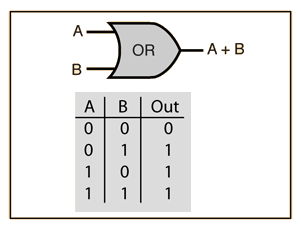Threshold Logic Unit
1. Problem
Do find a minimal set of training instance that will train the OR Threshold Logic Unit (TLU) correctly according to the error-correction procedure.
In other words, consider the problem of training a TLU to do logical disjunction
(logical “or”) using the error-correction procedure. Notice
that this operator takes two inputs, but to apply the procedure, you need to add one more
input whose value is always 1, and use 0 as the threshold. Suppose that we start with
the initial weights all equal to 0, and learning rate c = 1. Find a minimal set of training
instances that will correctly train the TLU according to the procedure. Here a training set
is minimal if removing any instance in it will not produce a TLU for the logical disjunction.
Please show the details of your work inlcuding the converging sequence of the weights.
2. Solution
I use Numpy and power set to find a minimal set of training instance that will train the OR TLU correctly according to the error-correction procedure.
2.1 Create power set of training instances for OR TLU

According to the problem description, I should add one more input whose value is always 1 into two inputs. This one can be represented as like the following input matrix, full_X. The first column which contains only 1 to follow the description, and other following columns’ combinations are maximum training set to train the OR gate considering the above OR gate’s truth table. To be specific, second and third columns show A, B respectively.
Using power set, I create all possible training instances to train the OR gate except for the empty set, which is in power_set_of_training_instances.
full_X = np.array([[1, 0, 0],
[1, 0, 1],
[1, 1, 0],
[1, 1, 1]])
# except for the empty set, sort by the # of training instances
power_set_of_training_instances = sorted(power_set(full_X), key=(len))[1:]
[[array([1, 0, 0])],
[array([1, 0, 1])],
[array([1, 1, 0])],
[array([1, 1, 1])],
[array([1, 0, 0]), array([1, 0, 1])],
[array([1, 0, 0]), array([1, 1, 0])],
[array([1, 0, 1]), array([1, 1, 0])],
[array([1, 0, 0]), array([1, 1, 1])],
[array([1, 0, 1]), array([1, 1, 1])],
[array([1, 1, 0]), array([1, 1, 1])],
[array([1, 0, 0]), array([1, 0, 1]), array([1, 1, 0])],
[array([1, 0, 0]), array([1, 0, 1]), array([1, 1, 1])],
[array([1, 0, 0]), array([1, 1, 0]), array([1, 1, 1])],
[array([1, 0, 1]), array([1, 1, 0]), array([1, 1, 1])],
[array([1, 0, 0]), array([1, 0, 1]), array([1, 1, 0]), array([1, 1, 1])]]
2.2 Train the sorted power set of training instances according to the error-correction procedure
The reason I sort the power set by the number of training instances is my task is to find the minimum training instance set for OR TLU. If I start to verify that each training instances set in the sorted power set satisfies OR TLU, my program will stop as soon as possible when it meets the suitable set, which is the minimum number of set like the blow steps.
As the description mentioned, the initial weights all equal to 0. That’s why W includes all 0 elements array. desired_output returns what the OR gate does.
for X in power_set_of_training_instances:
X = np.array(X)
W = np.array([0, 0, 0])
d = desired_output(X)
if train(X, W, d, full_X):
print('I end up finding minimal instances to make OR gate!')
print('Minimal training instances are', X)
break
else:
print('This training instances cannot make OR gate. \n')train function trains by W <- W + X.T(d-f) which is the error-correction procedure. This updates W while given X can’t produce desired output. If it can create desired output, check the desired output is the same with or gate’s desired one or not.
def train(X, W, d, full_X):
print('Training instances: ', X)
print('Initial weights', W)
while not (f(X, W) == d).all():
W = W + np.matmul(X.T, d - f(X, W))
print('Weights are updated: ', W)
else:
if (f(full_X, W) == desired_output(full_X)).all():
return True
else:
return False
Training instances: [[1 0 0]]
Initial weights [0 0 0]
Weights are updated: [-1 0 0]
This training instances cannot make OR gate.
Training instances: [[1 0 1]]
Initial weights [0 0 0]
This training instances cannot make OR gate.
Training instances: [[1 1 0]]
Initial weights [0 0 0]
This training instances cannot make OR gate.
Training instances: [[1 1 1]]
Initial weights [0 0 0]
This training instances cannot make OR gate.
Training instances: [[1 0 0]
[1 0 1]]
Initial weights [0 0 0]
Weights are updated: [-1 0 0]
Weights are updated: [0 0 1]
Weights are updated: [-1 0 1]
This training instances cannot make OR gate.
Training instances: [[1 0 0]
[1 1 0]]
Initial weights [0 0 0]
Weights are updated: [-1 0 0]
Weights are updated: [0 1 0]
Weights are updated: [-1 1 0]
This training instances cannot make OR gate.
Training instances: [[1 0 1]
[1 1 0]]
Initial weights [0 0 0]
This training instances cannot make OR gate.
Training instances: [[1 0 0]
[1 1 1]]
Initial weights [0 0 0]
Weights are updated: [-1 0 0]
Weights are updated: [0 1 1]
Weights are updated: [-1 1 1]
I end up finding minimal instances to make OR gate!
Minimal training instances are [[1 0 0]
[1 1 1]]
For the format of training instance, it is added one more input whose value is always 1 into the first column. This means the real training instances should be [[0 0] [1 1]] without the first column. You can check all code here OR.py link Click!.